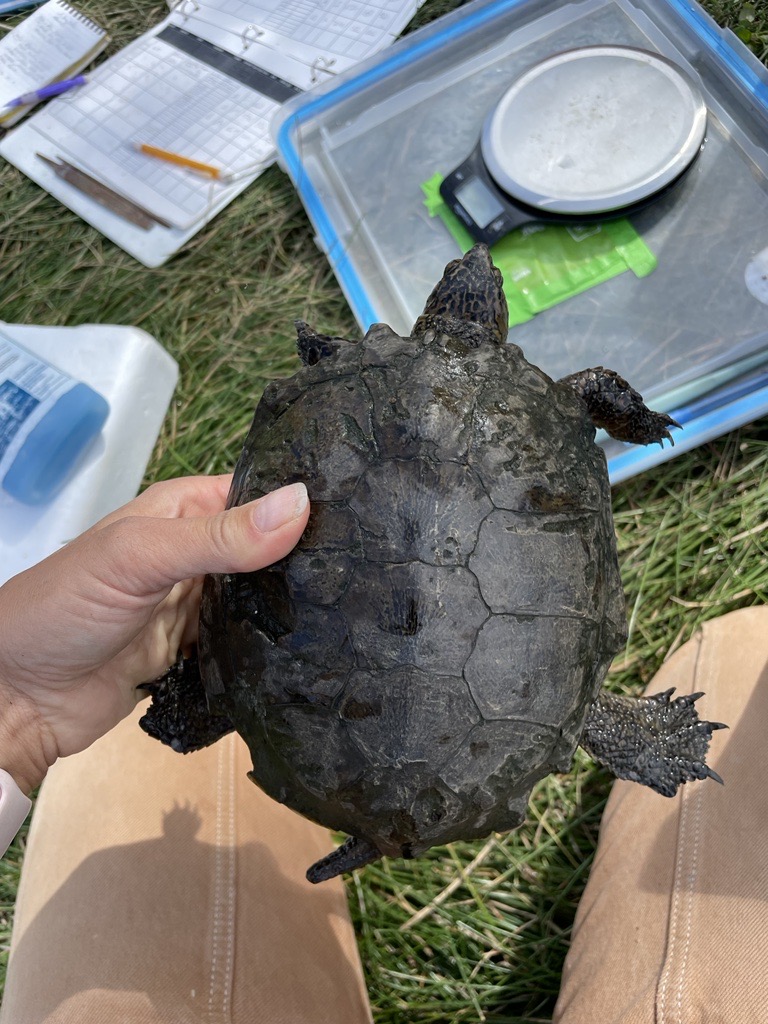Turtle Research at Glenwood’s Santos Pond
Meet Freckle! He’s a Western Pond Turtle that was first observed at our Glenwood property three years ago. Back then, we had just begun working with Max Lambert, PhD, a researcher who is now working with the Washington Department of Fish and Wildlife. Max was researching population dynamics of free-ranging turtles using Glenwood’s Santos Pond as one of his sample sites.
While gathering data on our population of Western Pond Turtles and non-native Red-eared Slider turtles, Max became suspicious when he observed that many of the pond turtles exhibited extensive shell damage. He was aware of Pond Turtle Shell Disease in Washington, which has been associated with the fungus Emydomyces testavorans (Emte) and is thought to have originated in captive-bred turtles released into the wild.
Along with Obed Hernandez-Gomez, a research scientist with the Dominican University of California, and a few researchers at the San Francisco Zoo, Max tested nine pond turtles and three sliders for Emte. Oddly enough, despite showing significant signs of shell rot, the pond turtles all (thankfully) tested negative for the fungus, whereas the three sliders all tested positive, despite having no visible symptoms. These three sliders became the first documented case of Emte in California. While these results didn’t solve the mystery of poor shell health in the pond turtles, the discovery was important because now biologists and resource managers can look for symptoms and test for the disease in other turtle populations around the state.
Current research shows that Western Pond Turtle populations in northern California are considered relatively stable compared to the central and southern regions of the west coast. However, pond turtles are tougher than their size suggests—and they can suffer serious injury for years before showing evidence of decline, which is why the research team is advocating for proactive management before declines are observed.
Freckle has seemingly been through quite a bit, and we are not completely sure what is wrong with him. He had what we believe was a significant fracture on the plastron (the bottom of his shell) and was taken to the San Francisco Zoo two years ago to be operated on by the zoo’s vets. Thankfully, they were able to use an epoxy to fuse the fracture back together.
The researchers believe predators like domestic dogs, coyotes, raccoons, or bobcats may be the culprits behind the incisor marks found on our pond turtles’ shells. We are interested in learning more about this and may install game cameras at the pond to try and catch a predator in the act. Findings like these can help to guide our management practices moving forward.
Since being found and booked for a stay at the zoo to get fixed up, we have recaptured Freckle over the last two years, so the good news is he still going strong!
